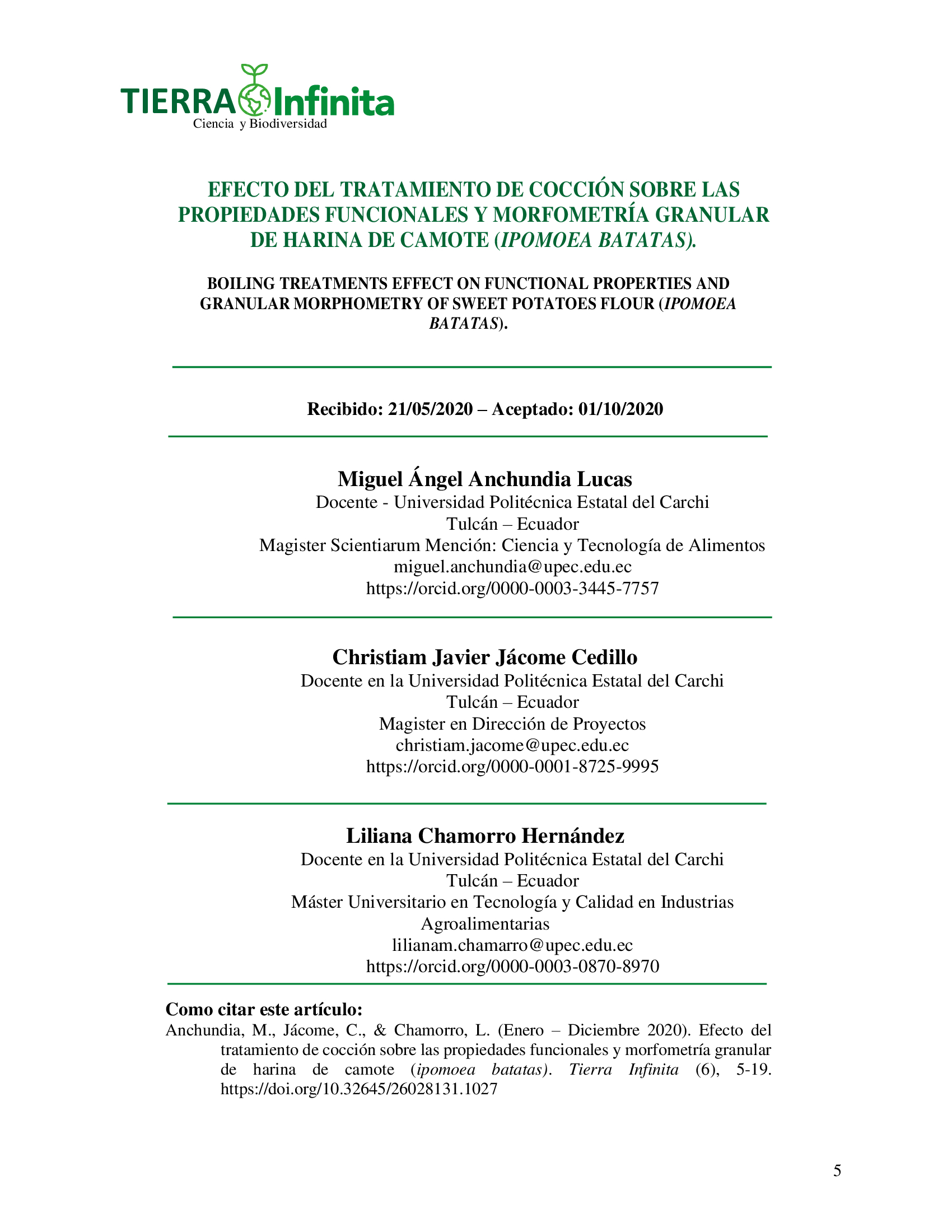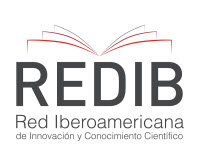Efecto del tratamiento de cocción sobre las propiedades funcionales y morfometría granular de harina de camote (ipomoea batatas)
DOI:
https://doi.org/10.32645/26028131.1027Keywords:
Sweet potato, flour, viscosity, granules, cookingAbstract
In order to offer an alternative for the postharvest loss of the sweet potato flours were prepared by boiling in an autoclave and in an industrial kettle, characterized functionally and morphologically by the interpretation of amylographic curves and observation of the starch granules under the optical microscope. Statistically significant differences (p≤0.05) were found in the functional parameters due to the applied thermal treatments, at autoclaving boiled flour, the pasting temperature, maximum viscosity and breakdown index decreased; the setback viscosity increased. In the morphometry of the starch granules, the predominant form in raw sweet potato flour was spherical, with a frequency of 37%, with an intermediate size between 3 and 5.65 μm. There was a 44% reduction of the granules present in the treated flour by autoclaving and 33% in the boiled flour in the industrial kettle. According to the functional characteristics obtained, the incorporation of sweet potato flours can be recommended in the formulation and preparation of low viscosity foods, with good stability to constant heating and agitation and that requires refrigeration and freezing conditions, such as: sauces, beverages, desserts and other products.

Downloads
Published
Issue
Section
License
Copyright (c) 2020 Miguel Ángel Anchundia L, Christiam Javier Jácome Cedillo, Liliana Chamorro Hernández

This work is licensed under a Creative Commons Attribution-NonCommercial-ShareAlike 4.0 International License.
El autor mantiene los derechos intelectuales y morales de su obra, autorizando a la editorial de la Revista Tierra Infinita la difusión y divulgación de su contenido con fines estrictamente académicos y de investigación, sin fines de lucro.










